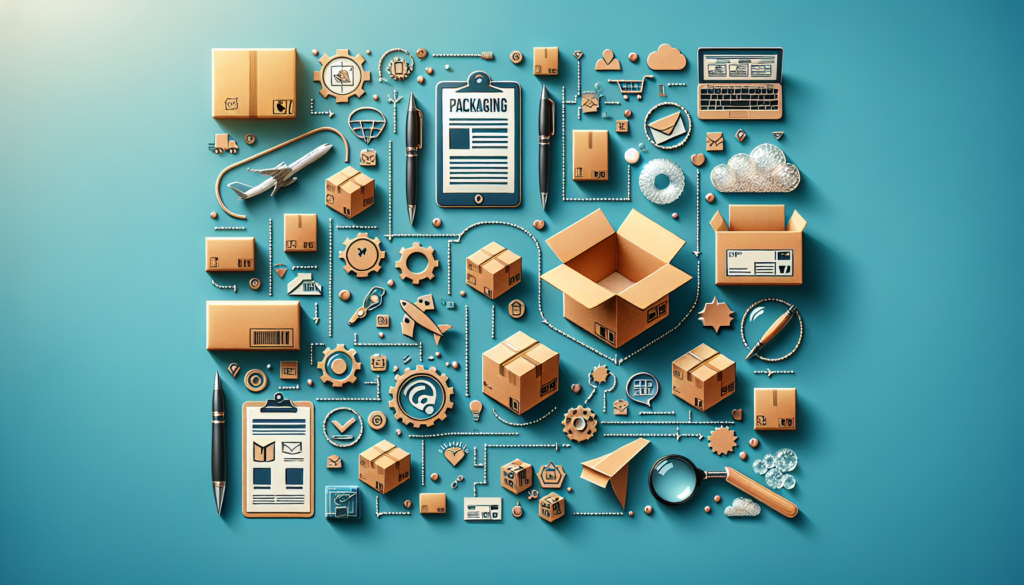In the dizzying world of e-commerce, packaging and product presentation emerge as critical factors for customer satisfaction and brand image. As e-commerce solidifies as a pillar of global consumption, the unboxing experience becomes a pivotal moment in the consumer-brand relationship. This article unravels the layers of complexity surrounding the design of effective packaging, from engineering to current trends, through consumer psychology and environmental impact.
Innovations in Packaging Materials and Design
The use of advanced materials in packaging development has enabled lighter, stronger, and more customized designs. Biodegradable polymers, reinforced kraft paper, and recycled plastics are evidence of the evolution towards sustainability. Advances in 3D printing and laser cutting open the door to scalable customizations that were previously prohibitive in cost and time, offering a unique and differentiating customer experience.
Case Study: Use of Hydrogels
A notable example is the use of hydrogels in cooling systems for perishable products that, by absorbing water and transforming into gel, maintain controlled temperature more efficiently and ecologically than traditional gel packs.
Psychology of Packaging and the Unboxing Experience
Understanding the psychology behind the unboxing experience is essential to design packaging that delights the consumer. Anticipation and visual pleasure are stimulated by incorporating vibrant colors, tactile textures, and interactive elements that invite the customer on a sensory journey. In turn, the ease of opening the package and the arrangement of the contents can increase the perception of value of the product and the brand.
Emotional Impact Study
Neuroscience research shows that aesthetically pleasing and easy-to-open packaging can increase activity in the brain’s reward centers, strengthening the emotional connection with the brand.
Sustainability and Waste Management
Environmental responsibility is a driving force in packaging design. The creation of reusable, recyclable, or edible packaging reduces the ecological footprint and meets consumer demand for environmentally friendly practices. Innovations such as mycelium packaging or cornstarch-based plastic films exemplify how the industry is responding to this need with creativity and technology.
Implementation of Circular Economy
A practical example is the adoption of the circular economy by certain companies, which not only considers the end of the packaging’s useful life but incorporates materials that can be reintegrated into the production cycle, avoiding waste.
Impact of Packaging on E-commerce Logistics
The design of packaging has a direct impact on logistical efficiency, from storage to transport. Space optimization and product protection have become critical aspects. By reducing the volume and weight of packaging, shipping costs and greenhouse gas emissions are minimized, achieving a balance between practicality and environmental protection.
Innovation in Distribution Models
The implementation of smart packaging with IoT sensors allows for real-time tracking of product conditions, offering added value for both the seller and the consumer and optimizing supply chain flows.
Conclusions and the Future of Packaging in E-commerce
The packaging of the future must not only be attractive and functional but also adaptive and sustainable. The incorporation of technology will be key to meeting demands for customization and traceability, while the need to minimize environmental impact will continue to be a strong driver for innovation.
Prospects for Innovation
The development of intelligent and autonomous packaging, with the ability to change shape or self-repair, as well as the use of massive data sources to anticipate design needs, are promising future directions that are being actively explored in research and development.
Packaging and presentation in e-commerce encompass much more than mere product protection; they are a tangible dialogue between the brand and the consumer, an essential component of marketing, and a critical link in the sustainability value chain. By delving into the engineering, psychology, and logistics behind packaging, its relevance in an increasingly competitive and environmentally conscious e-commerce ecosystem is revealed.

